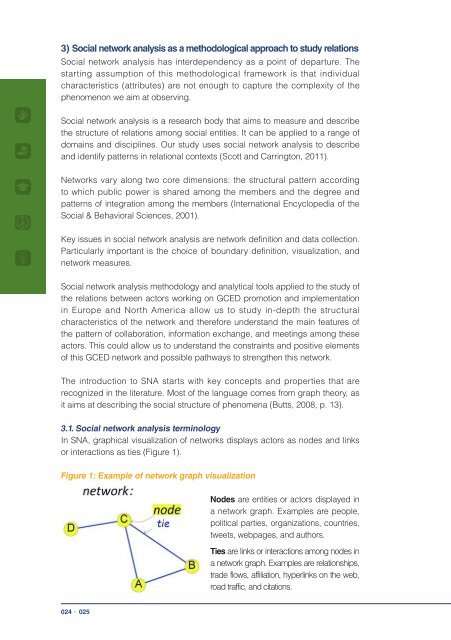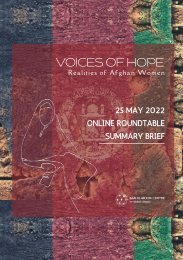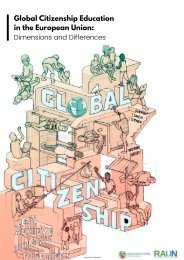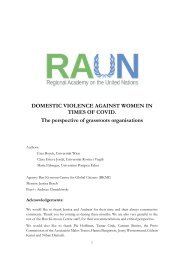Europe and North America Regional GCED Network
The report “Europe and North America Regional GCED Network” is based on a research project funded by Asia-Pacific Centre of Education for International Understanding (APCEIU) and Ban Ki-moon Centre for Global Citizens (BKMC) led by Lynette Shultz (Centre for Global Citizenship Education and Research, University of Alberta) and Massimiliano Tarozzi (International Research Centre on Global Citizenship Education, University of Bologna) as Principal Investigators. The research team was composed of Carrie Karsgaard and Carla Inguaggiato, with the support of Kester Muller and Francis Owusu.
The report “Europe and North America Regional GCED Network” is based on a research project funded by Asia-Pacific Centre of Education for International Understanding (APCEIU) and Ban Ki-moon Centre for Global Citizens (BKMC) led by Lynette Shultz (Centre for Global Citizenship Education and Research, University of Alberta) and Massimiliano Tarozzi (International Research Centre on Global Citizenship Education, University of Bologna) as Principal Investigators. The research team was composed of Carrie Karsgaard and Carla Inguaggiato, with the support of Kester Muller and Francis Owusu.
You also want an ePaper? Increase the reach of your titles
YUMPU automatically turns print PDFs into web optimized ePapers that Google loves.
3) Social network analysis as a methodological approach to study relations<br />
Social network analysis has interdependency as a point of departure. The<br />
starting assumption of this methodological framework is that individual<br />
characteristics (attributes) are not enough to capture the complexity of the<br />
phenomenon we aim at observing.<br />
Social network analysis is a research body that aims to measure <strong>and</strong> describe<br />
the structure of relations among social entities. It can be applied to a range of<br />
domains <strong>and</strong> disciplines. Our study uses social network analysis to describe<br />
<strong>and</strong> identify patterns in relational contexts (Scott <strong>and</strong> Carrington, 2011).<br />
<strong>Network</strong>s vary along two core dimensions: the structural pattern according<br />
to which public power is shared among the members <strong>and</strong> the degree <strong>and</strong><br />
patterns of integration among the members (International Encyclopedia of the<br />
Social & Behavioral Sciences, 2001).<br />
Key issues in social network analysis are network definition <strong>and</strong> data collection.<br />
Particularly important is the choice of boundary definition, visualization, <strong>and</strong><br />
network measures.<br />
Social network analysis methodology <strong>and</strong> analytical tools applied to the study of<br />
the relations between actors working on <strong>GCED</strong> promotion <strong>and</strong> implementation<br />
in <strong>Europe</strong> <strong>and</strong> <strong>North</strong> <strong>America</strong> allow us to study in-depth the structural<br />
characteristics of the network <strong>and</strong> therefore underst<strong>and</strong> the main features of<br />
the pattern of collaboration, information exchange, <strong>and</strong> meetings among these<br />
actors. This could allow us to underst<strong>and</strong> the constraints <strong>and</strong> positive elements<br />
of this <strong>GCED</strong> network <strong>and</strong> possible pathways to strengthen this network.<br />
The introduction to SNA starts with key concepts <strong>and</strong> properties that are<br />
recognized in the literature. Most of the language comes from graph theory, as<br />
it aims at describing the social structure of phenomena (Butts, 2008, p. 13).<br />
3.1. Social network analysis terminology<br />
In SNA, graphical visualization of networks displays actors as nodes <strong>and</strong> links<br />
or interactions as ties (Figure 1).<br />
Figure 1: Example of network graph visualization<br />
Nodes are entities or actors displayed in<br />
a network graph. Examples are people,<br />
political parties, organizations, countries,<br />
tweets, webpages, <strong>and</strong> authors.<br />
Ties are links or interactions among nodes in<br />
a network graph. Examples are relationships,<br />
trade flows, affiliation, hyperlinks on the web,<br />
road traffic, <strong>and</strong> citations.<br />
024ㆍ025


















